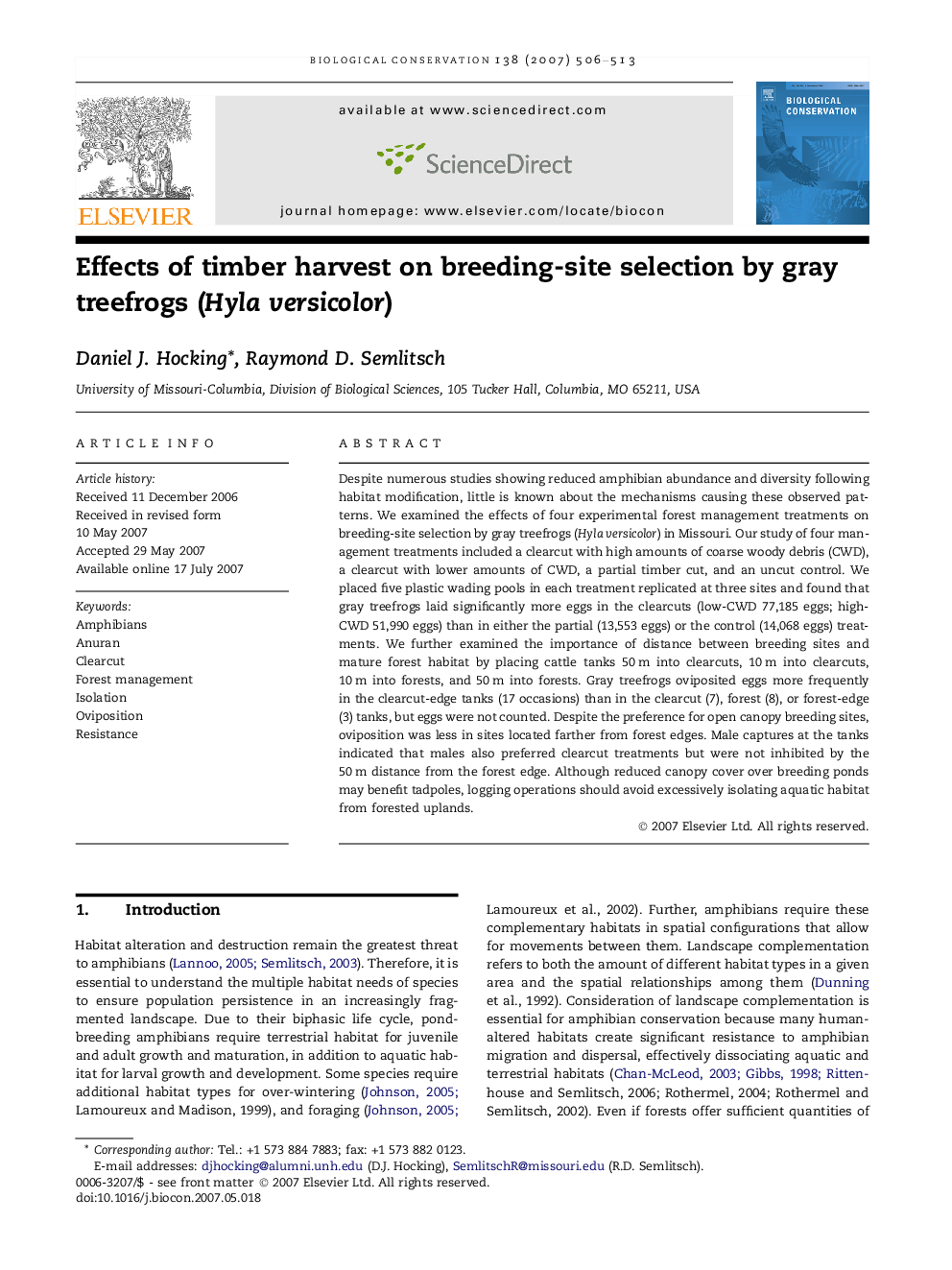| Article ID | Journal | Published Year | Pages | File Type |
|---|---|---|---|---|
| 4387174 | Biological Conservation | 2007 | 8 Pages |
Despite numerous studies showing reduced amphibian abundance and diversity following habitat modification, little is known about the mechanisms causing these observed patterns. We examined the effects of four experimental forest management treatments on breeding-site selection by gray treefrogs (Hyla versicolor) in Missouri. Our study of four management treatments included a clearcut with high amounts of coarse woody debris (CWD), a clearcut with lower amounts of CWD, a partial timber cut, and an uncut control. We placed five plastic wading pools in each treatment replicated at three sites and found that gray treefrogs laid significantly more eggs in the clearcuts (low-CWD 77,185 eggs; high-CWD 51,990 eggs) than in either the partial (13,553 eggs) or the control (14,068 eggs) treatments. We further examined the importance of distance between breeding sites and mature forest habitat by placing cattle tanks 50 m into clearcuts, 10 m into clearcuts, 10 m into forests, and 50 m into forests. Gray treefrogs oviposited eggs more frequently in the clearcut-edge tanks (17 occasions) than in the clearcut (7), forest (8), or forest-edge (3) tanks, but eggs were not counted. Despite the preference for open canopy breeding sites, oviposition was less in sites located farther from forest edges. Male captures at the tanks indicated that males also preferred clearcut treatments but were not inhibited by the 50 m distance from the forest edge. Although reduced canopy cover over breeding ponds may benefit tadpoles, logging operations should avoid excessively isolating aquatic habitat from forested uplands.
